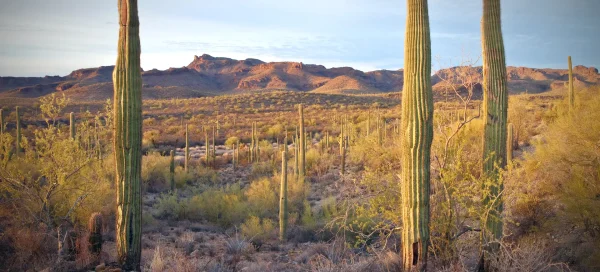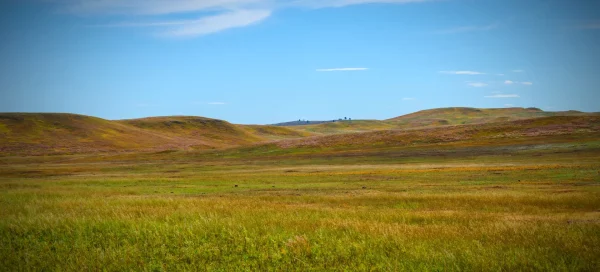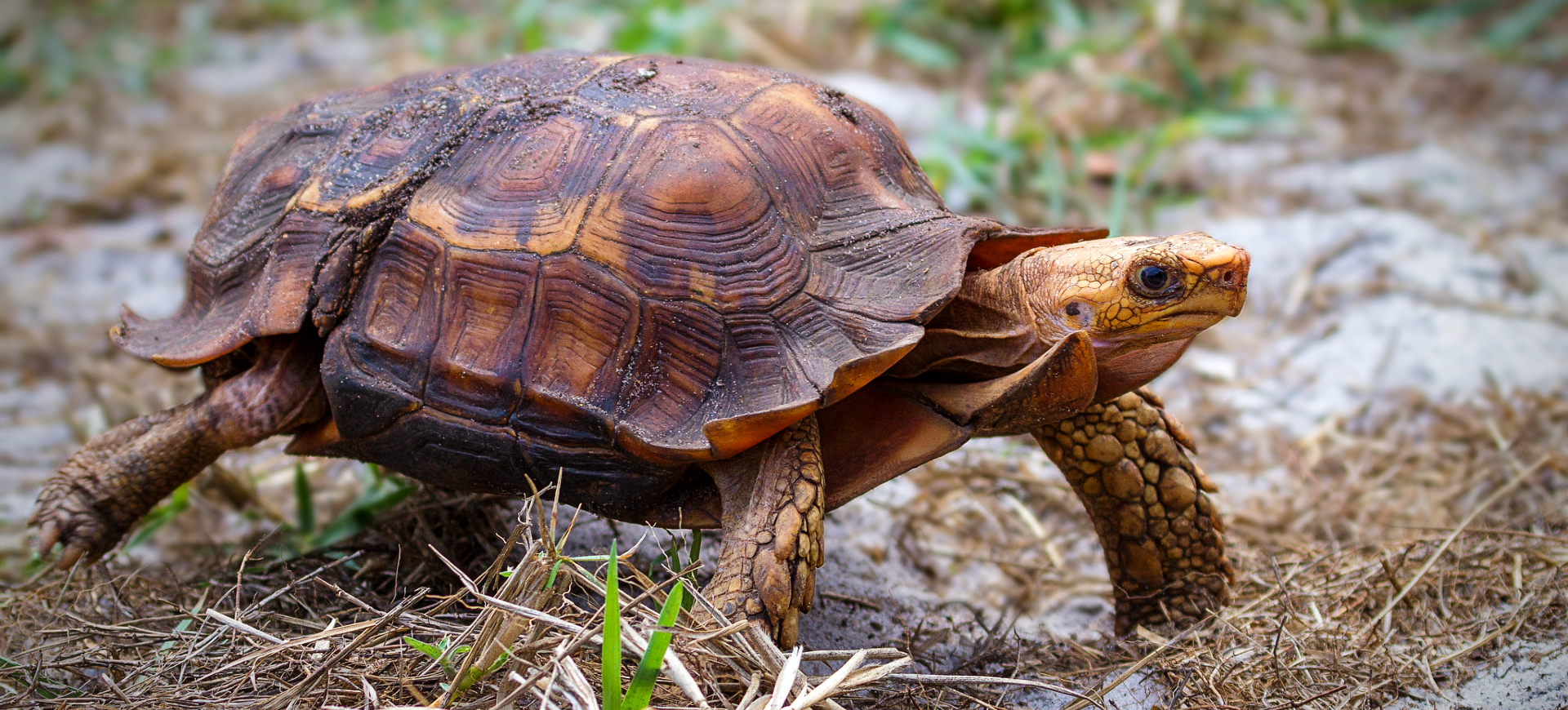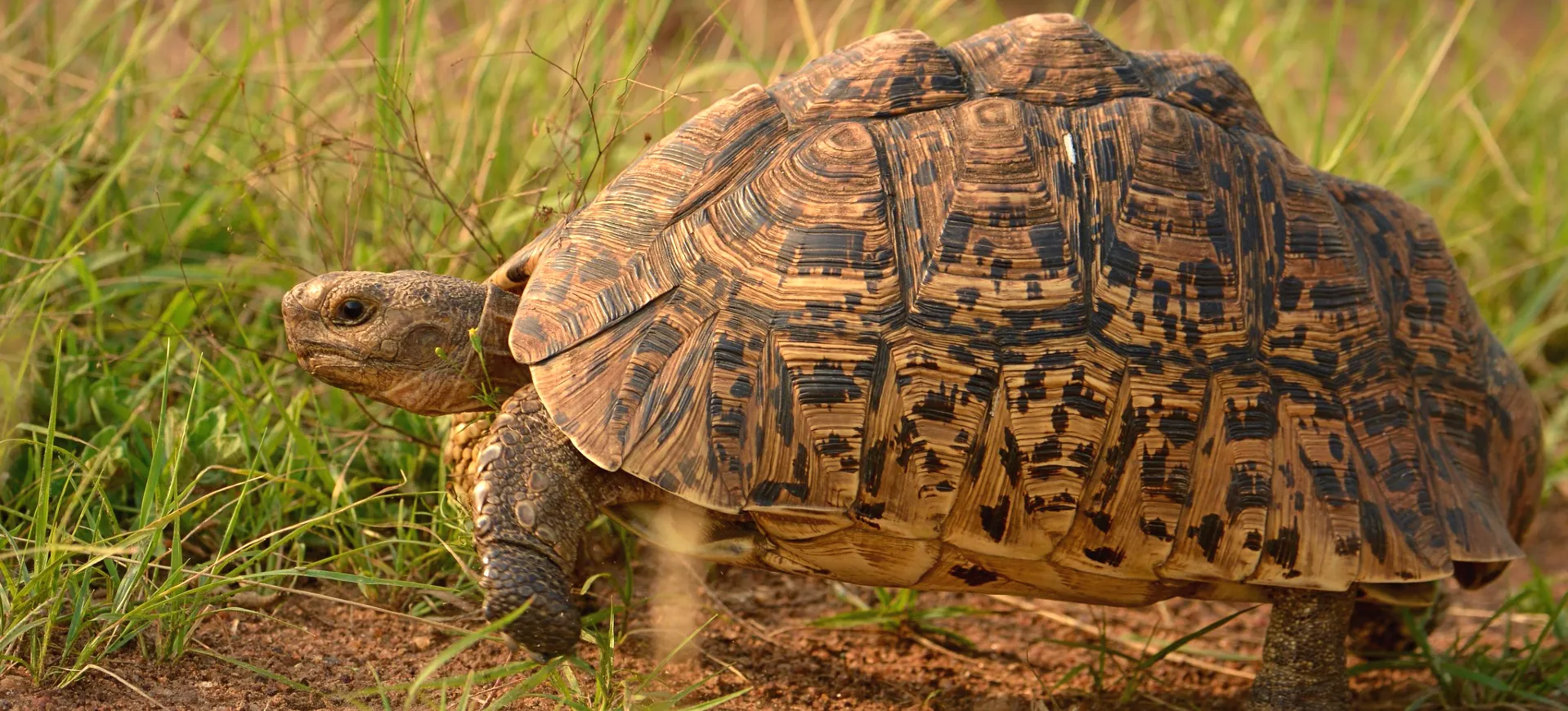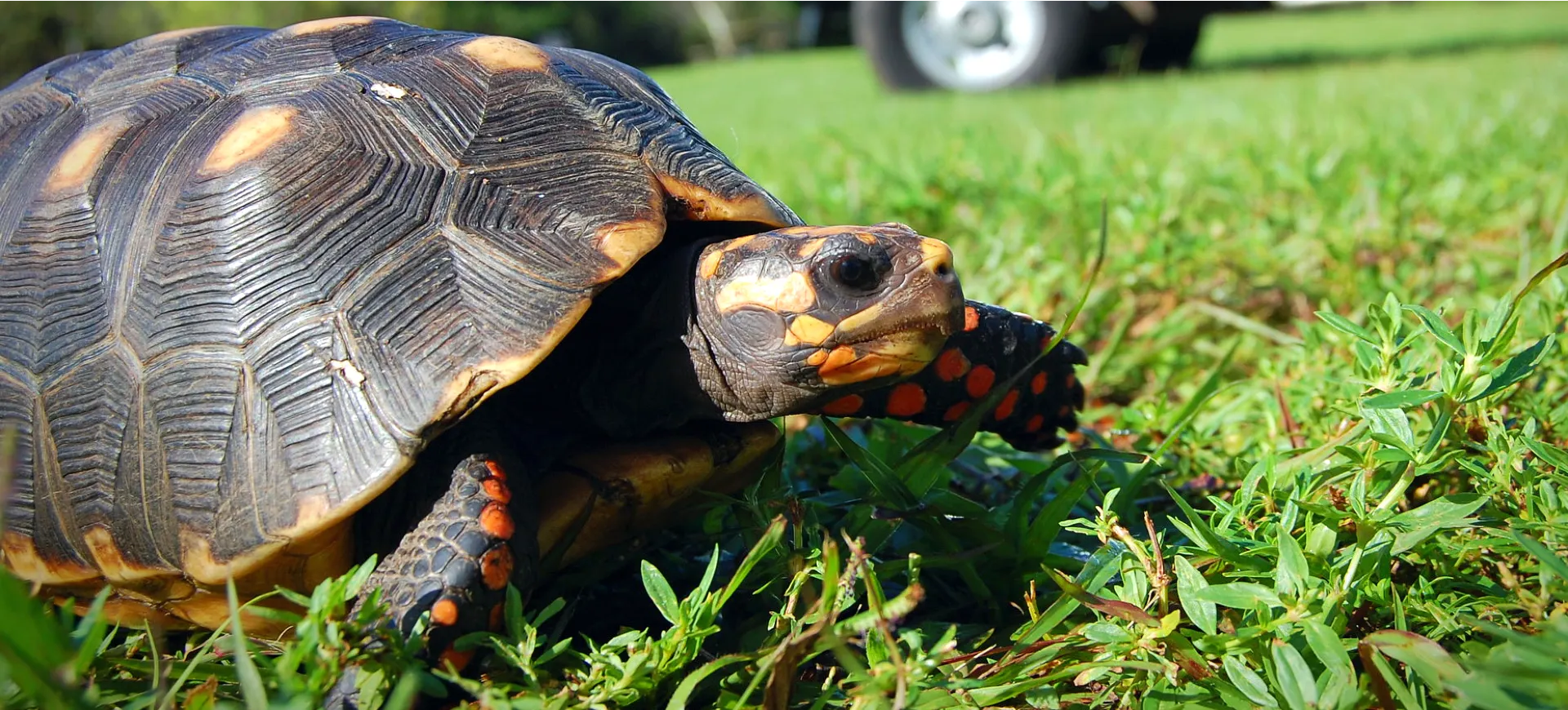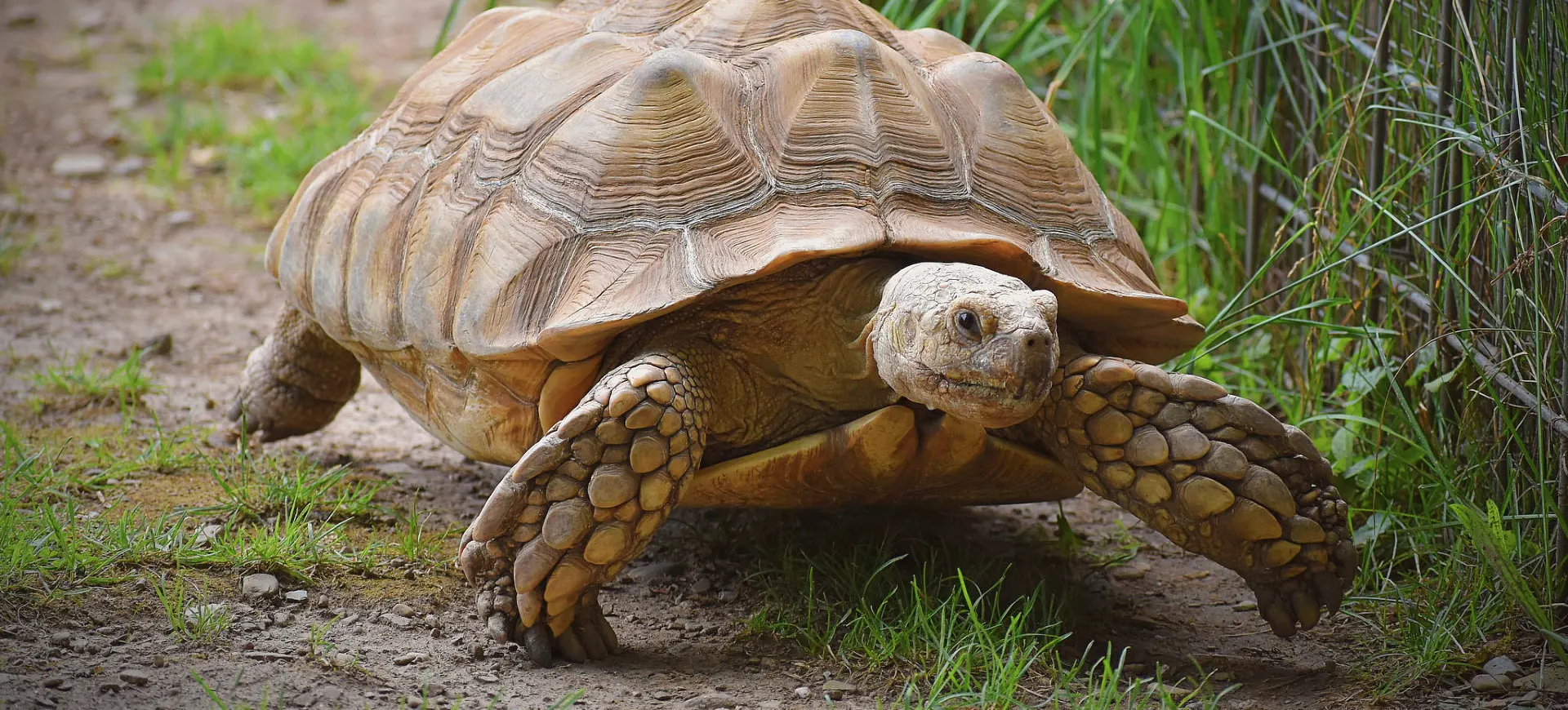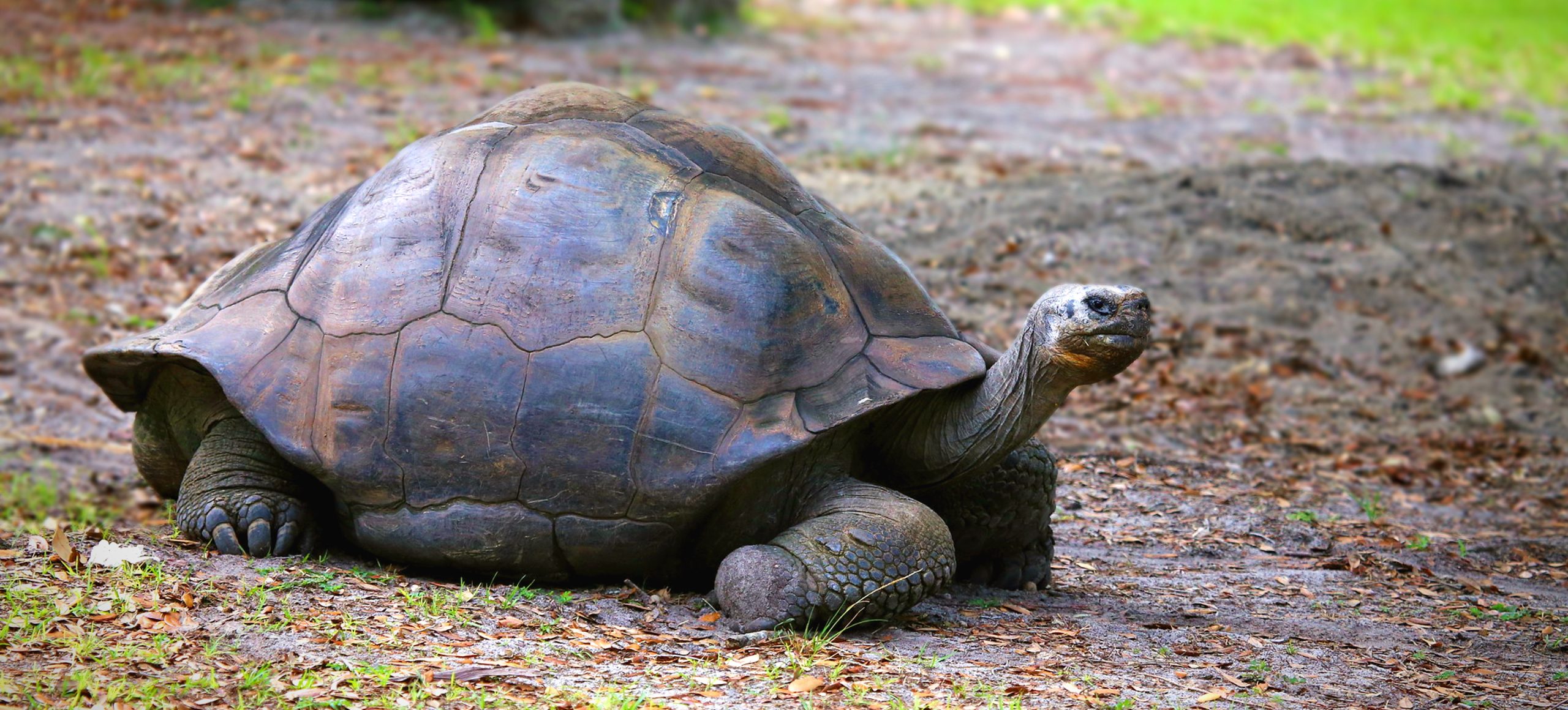Overview
The Texas tortoise is a native species to the United States, primarily inhabiting southern Texas. It also extends its range into areas of northeastern Mexico. This land-dwelling reptile is slow-moving and is especially adapted to life in semi-arid landscapes. Its preferred habitats include thorny scrublands, deserts, and other arid regions with either sandy or loamy soils. These areas’ soils are conducive to the tortoise’s habit of digging burrows for shelter and nesting.
The physical attributes of the Texas tortoise are well-suited for its environment. One of its most distinguishing features is its dome-shaped carapace, which exhibits a mosaic of intricate patterns and can vary in color from light to dark brown. This shell serves as a protective armor and helps in thermoregulation, aiding the tortoise in maintaining its body temperature. The carapace is also designed to collect and channel rainwater toward the tortoise’s mouth, providing hydration.
Unlike many other tortoise species that might hibernate during adverse conditions, the Texas tortoise has developed the capability to tolerate warmer temperatures and arid conditions. It employs a behavioral strategy known as estivation during extremely hot and dry periods. During estivation, the tortoise becomes less active and retreats to its burrow, reducing its metabolic rate to conserve energy and water. This adaptation enables the Texas tortoise to survive in environments many other tortoise species find inhospitable.
Taxonomy
Kingdom
Phylum
Class
Order
Family
Genus
Species
Type
Physical Description:
The Texas tortoise features a relatively small carapace compared to other tortoise species, generally ranging in color from light brown to dark brown. The shell is distinctively domed and possesses unique grooves and notches, giving it a textured or bumpy appearance. These features are not merely ornamental; they have evolved to serve specific functions. For instance, the grooves and notches help channel rainwater toward the tortoise’s mouth, aiding in hydration, particularly in the arid regions where it resides.
Regarding locomotion, the Texas tortoise is equipped with stumpy yet powerful legs that are well-adapted for digging and navigating rough terrains. These legs allow the tortoise to dig burrows, which serve as shelters during extreme weather conditions and also as nesting sites. Additionally, the tortoise possesses a beak-like mouth that is robust. This specialized mouth structure enables the tortoise to feed effectively on a variety of plant matter and also to consume occasional animal matter like insects, thus making it well-adapted to its habitat.

Lifespan: Wild: ~40 Years || Captivity: ~60 Years

Weight: Male: 8–15 lbs (3.6–6.8 kg) || Female: 6–12 lbs (2.7–5.4 kg)

Length: Male: 8–12 inches (20–30 cm) || Female: 6–10 inches (15–25 cm)

Height: Male: 4–6 inches (10–15 cm) || Female: 3–5 inches (7.6–12.7 cm)

Top Speed: 3 mph (4.8 km/h)
Characteristic:
Native Habitat:
The Texas tortoise is well-adapted to life in arid and semi-arid environments, showing a high degree of specialization for its chosen habitats. These habitats primarily consist of thorny shrublands, desert regions, and grasslands. In these landscapes, sandy or loamy soils are predominant, facilitating the tortoise’s ability to dig burrows. These burrows serve multiple functions, providing the tortoise a refuge from extreme climatic conditions and predators and acting as nesting sites for females during the breeding season.
Water availability is not a primary concern for the Texas tortoise when selecting a habitat. Unlike some other tortoise species that depend on proximity to water bodies, the Texas tortoise derives most of its hydration from the food it consumes. Plants such as succulents and cacti, commonly found in their native habitat, are rich in water content, fulfilling most of the tortoise’s hydration needs. This allows the Texas tortoise to thrive in areas where water is limited or scarce, demonstrating its specialized adaptation to the challenging environments it inhabits.
Biomes:
Biogeographical Realms:
Continents:
Countries:
Diet:
Diet & Feeding Habits:
The Texas tortoise thrives in arid and semi-arid regions, demonstrating remarkable adaptability to harsh environmental conditions. Its preferred habitats include thorny shrublands, desert regions, and grasslands. These landscapes typically feature sandy or loamy soils, ideal for the tortoise’s natural behaviors like digging for burrows. Burrows serve multiple purposes for the tortoise, providing shelter from predators and extreme weather conditions and nesting sites for laying eggs.
Interestingly, the availability of water sources does not play a significant role in determining the habitat suitability for the Texas tortoise. Instead, it relies heavily on its diet for hydration. The plants it consumes, such as cacti and succulents, often have high water content, allowing the tortoise to obtain most of its water needs through food. This evolutionary adaptation makes the Texas tortoise well-suited to survive and flourish in scarce water, demonstrating its unique ability to adapt to its surroundings.
Mating Behavior:
Mating Description:
Mating for the Texas tortoise generally occurs from late spring to early summer, coinciding with the warmer months when food availability is typically higher. During this period, males exhibit aggressive behaviors such as head bobbing and shell ramming to assert their dominance over potential rivals. These behaviors are crucial for establishing a hierarchy among males and gaining access to receptive females. The male’s success in these displays often determines his ability to mate and subsequently pass on his genes to the next generation.
Regarding reproduction, females lay a clutch of between 1 and 7 eggs, depending on various factors,s including age and health. The preferred nesting sites are usually composed of sandy soil, which makes it easier for the female to dig a nest for her eggs. After laying the eggs, the female meticulously covers them with soil to protect them from predators and to maintain a stable incubation environment. Unlike other reptile species, the Texas tortoise does not exhibit parental care post-egg laying; the eggs are left to incubate, and the young are left to fend for themselves upon hatching.
Reproduction Season:
Birth Type:
Pregnancy Duration:
Female Name:
Male Name:
Baby Name:
Social Structure Description:
The Texas tortoise is primarily a solitary creature, often spending most of its time alone as it traverses its habitat in search of food and other resources. However, it is not uncommon to find them in small groups, particularly when abundant food is available, such as when certain plants are in bloom. In such situations, the tortoises are more tolerant of each other’s presence, although interactions are generally limited to foraging activities rather than social engagement.
A hierarchical system often emerges within these occasional groupings, particularly among males. Dominance is established through aggressive behavior, including shell ramming and head bobbing. These actions assert control over a particular territory or access to females during the mating season. The dominant male usually gets the first choice of food and mates, underscoring the importance of these behaviors in the Texas tortoise’s life cycle and social structure.
Groups:
Conservation Status:
Population Trend:
The population of Texas tortoises in the wild is experiencing a decline, primarily due to a range of human-induced factors. Habitat loss resulting from urbanization and agriculture is a major concern, as it directly impacts the availability of suitable environments for the tortoises to thrive. Additionally, vehicle collisions represent a significant threat, particularly in regions where roads intersect their natural habitats. The pet trade also challenges the wild populations, as many individuals are captured and removed from their natural environments, thus decreasing the breeding population and exacerbating the risks of inbreeding.
Despite these challenges, protected areas and reserves in southern Texas offer some sanctuary for this dwindling species. These areas are vital for conserving the Texas tortoise, serving as habitats where they can live, feed, and reproduce with less human interference. However, the numbers are still downward, emphasizing the need for effective conservation strategies. Such strategies could include habitat restoration, public awareness campaigns, and stricter regulations against capturing these tortoises for the pet trade. Implementing these measures is crucial for preserving the Texas tortoise and ensuring its survival for future generations.
Population Threats:
Habitat destruction is one of the most pressing threats faced by the Texas tortoise, and it predominantly arises from human activities such as urban development and agricultural expansion. As more land is converted for these purposes, the natural habitats that the Texas tortoise calls home become fragmented or disappear altogether. This leads to isolated populations, which are more susceptible to the risks of inbreeding and disease. Furthermore, reducing available habitat can lead to increased competition among the tortoises for limited resources, such as food and nesting sites, making survival even more challenging for this species.
Another major issue affecting the Texas tortoise population is illegal collection for the pet trade. This practice reduces the natural population and contributes to the potential spread of diseases among wild and captive tortoises. Additionally, the presence of roads in and around their habitats increases the risk of vehicle collisions, commonly referred to as road kills, which further contributes to their dwindling numbers. These factors, often interrelated, magnify the challenges faced by the Texas tortoise and highlight the urgent need for concerted conservation efforts to protect this vulnerable species.
Conservation Efforts:
Several organizations are actively involved in conserving the Texas tortoise, employing various strategies to help stabilize and hopefully increase its population. One such strategy is captive breeding programs, which aim to increase the number of Texas tortoises in a controlled environment before reintroducing them into the wild. These programs also provide valuable data on the tortoise’s biology and reproductive habits, which can be useful for future conservation efforts. In addition to breeding programs, habitat restoration projects are being implemented to recover and protect the areas where these tortoises naturally occur. These projects often involve the removal of invasive plant species and planting of native vegetation, thereby creating a more suitable environment for the Texas tortoise to thrive.
Public awareness campaigns are another crucial aspect of these conservation efforts. These campaigns aim to educate the public about the ecological importance of the Texas tortoise and the threats it faces, including habitat destruction and illegal pet trade. Various media, from social media platforms to community events, are used to disseminate this information and encourage responsible behavior, such as not removing these creatures from their natural habitats. Such educational initiatives are vital for changing public perception and behavior, thereby contributing to the long-term survival of the Texas tortoise.
Additional Resources:
Fun Facts
- The Texas tortoise can retract its head and limbs into its shell for protection.
- Unlike many reptiles, the Texas tortoise is more active during the daytime.
- They can live without a water source for long periods, deriving hydration from their diet.
- Females lay their eggs in self-dug nests, often in sandy soil.
- The Texas tortoise is one of the few species native to the United States.
- It has been observed to eat carrion, making it an opportunistic feeder.
- The species can go into a form of estivation during the hottest months.
- Juvenile Texas tortoises have softer shells that harden as they grow.
- They are known to dig burrows for shelter from extreme weather conditions.
- Texas tortoises have a slow metabolism, which allows them to survive on a low-energy diet.



